Bitcoin is currently trading around $113,000, with realized cap continuing to grow steadily and spending activity mainly focused on coins under three months old. Profit-taking is still occurring actively, short-term traders are fluctuating around the break-even point, while long-term supply shows almost no signs of distribution.
On August 20, Bitcoin closed at $113,599, down 7.9% over the week, down 3.3% over 30 days, but still recording a 1.7% increase over 90 days. The liquidity of the spot market shows signs of cooling, with a 7-day average volume of $2.68 billion/day, lower than the 30-day average of $2.88 billion. This decline reflects weaker performance over the past week, but on-chain data shows that the selling activity is orderly to realize profits, rather than panic selling.
Realized cap and realized profits
The realized cap of Bitcoin is currently $1.04 trillion, increasing by $8.98 billion in the past 7 days and $34.85 billion in the past 30 days. These figures closely match the realized profit/loss (NRPL).
7-day NRPL: $8.59 billion
30-day NRPL: $33.25 billion
A small gap ($390 million in 7 days and $1.6 billion in 30 days) corresponds to the new issuance value from block rewards. With a reward of 3.125 BTC/block, an average of 450 BTC is mined each day, equivalent to $366 million in 7 days and $1.58 billion in 30 days. This indicates that the increase in realized cap is fully explained by realized profits and issuance from miners, with no unusual factors.
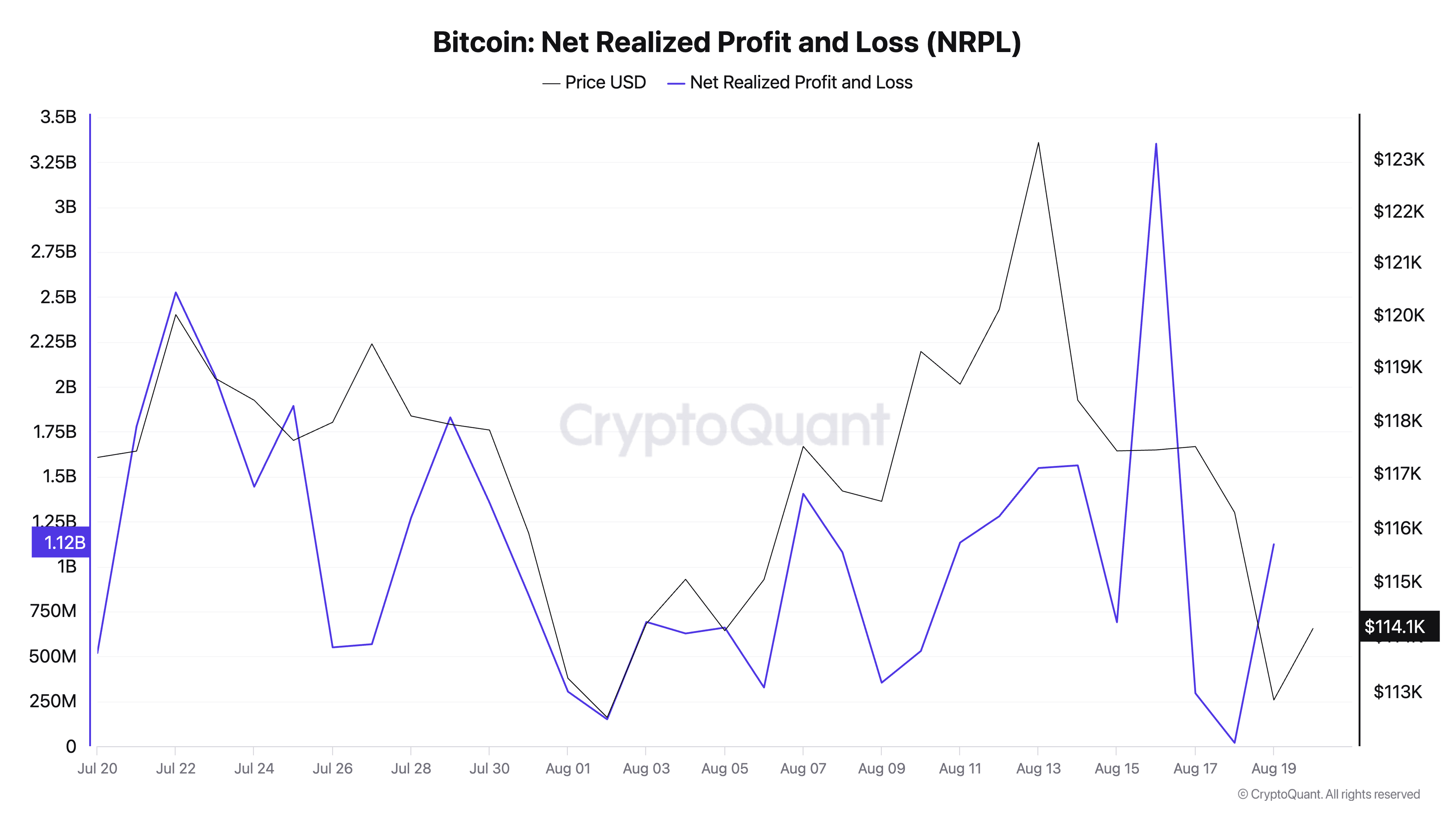
SOPR and investor behavior
SOPR indicators show that the market is taking profits steadily:
aSOPR: 1.028 (7-day average: 1.033), 30 consecutive days above 1 → most spending is in profit.
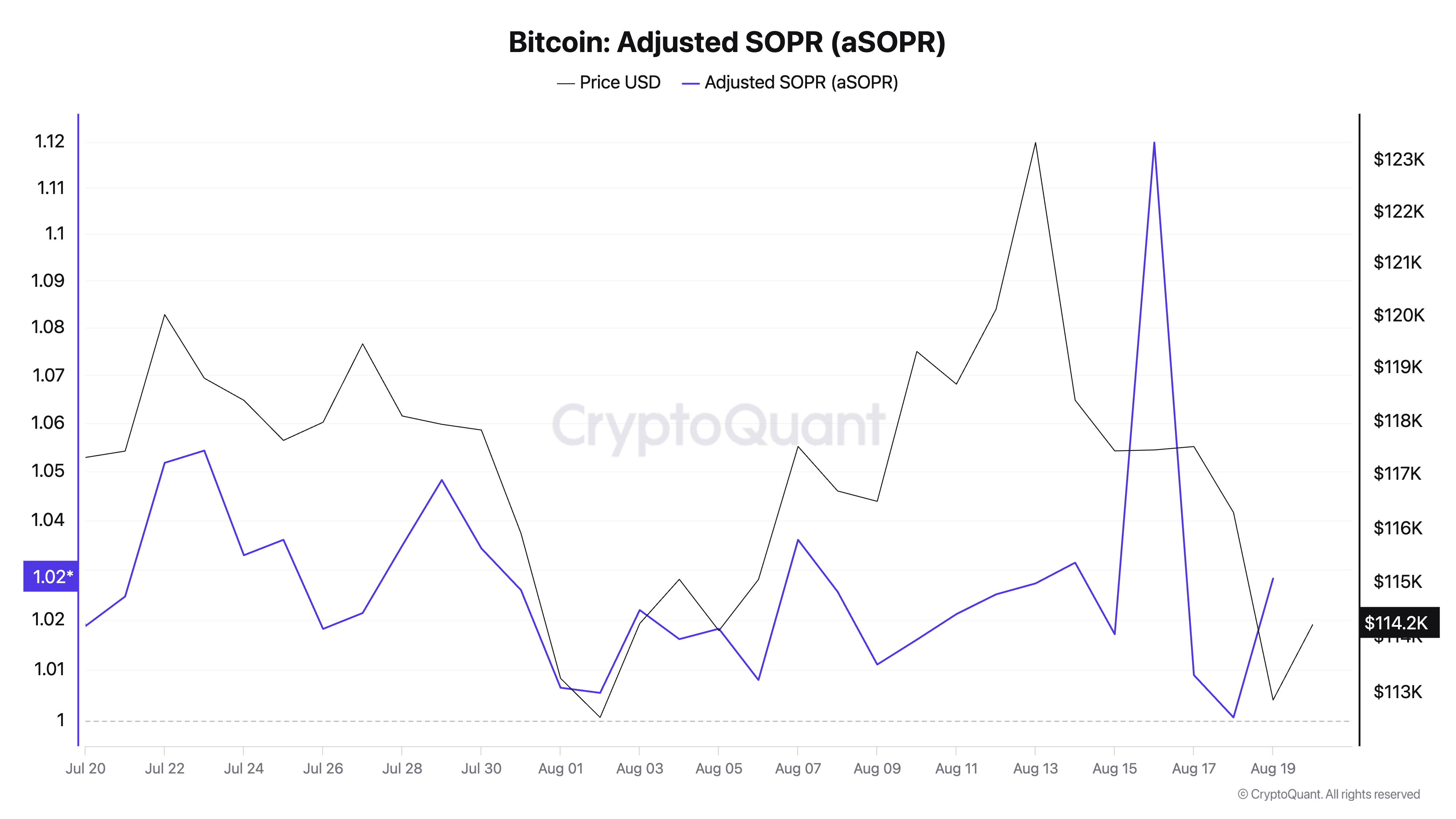
STH-SOPR (short-term investor): 0.995 (7-day average: 1.002), 24/30 days above 1 → many new investors are selling at break-even or with slight profits.
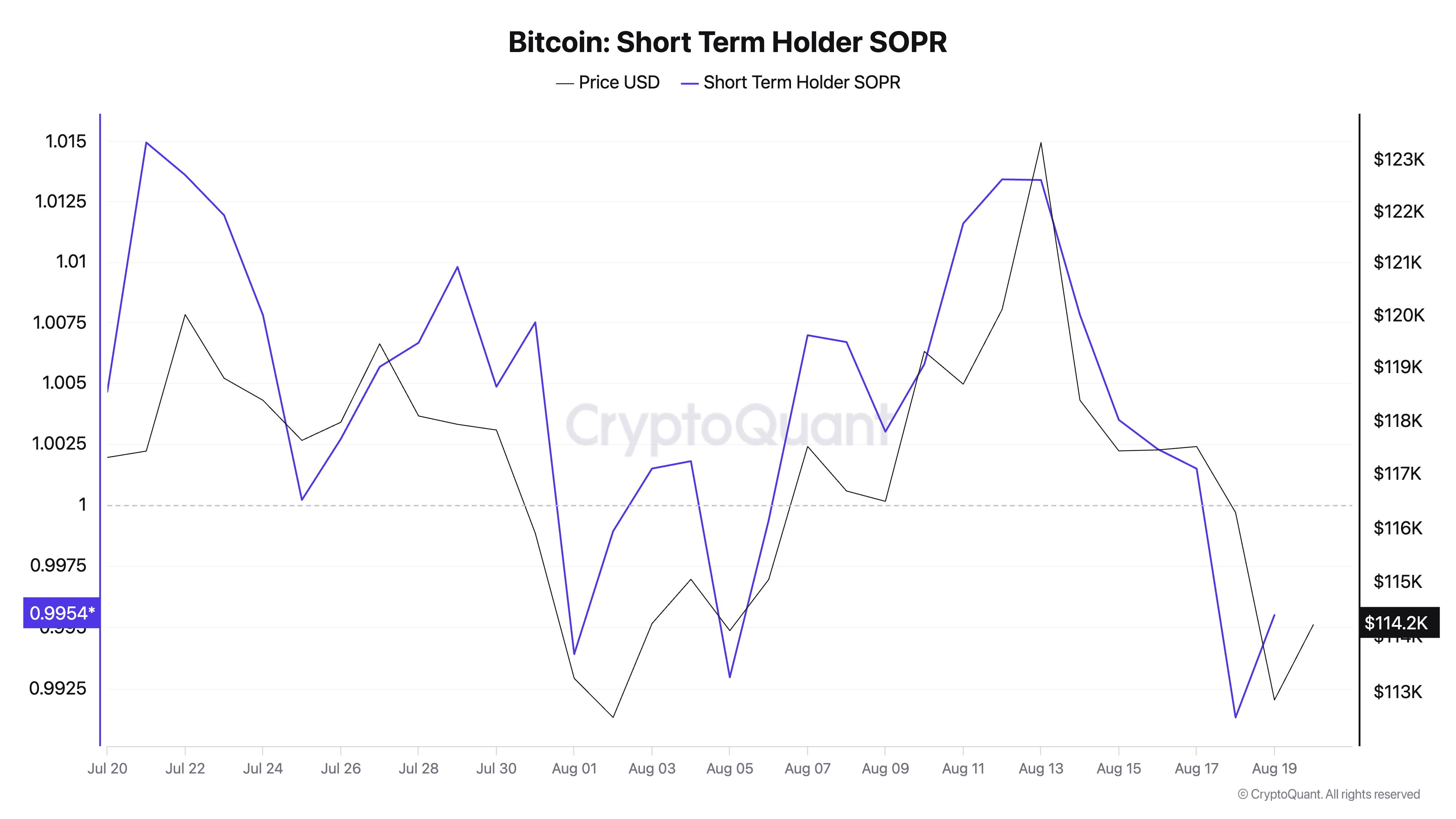
LTH-SOPR (long-term investor): 1.718 (30-day average: 2.21), all 30 days above 1 → long-term supply when moving usually brings significant profit, in line with partial profit-taking behavior rather than widespread panic selling.
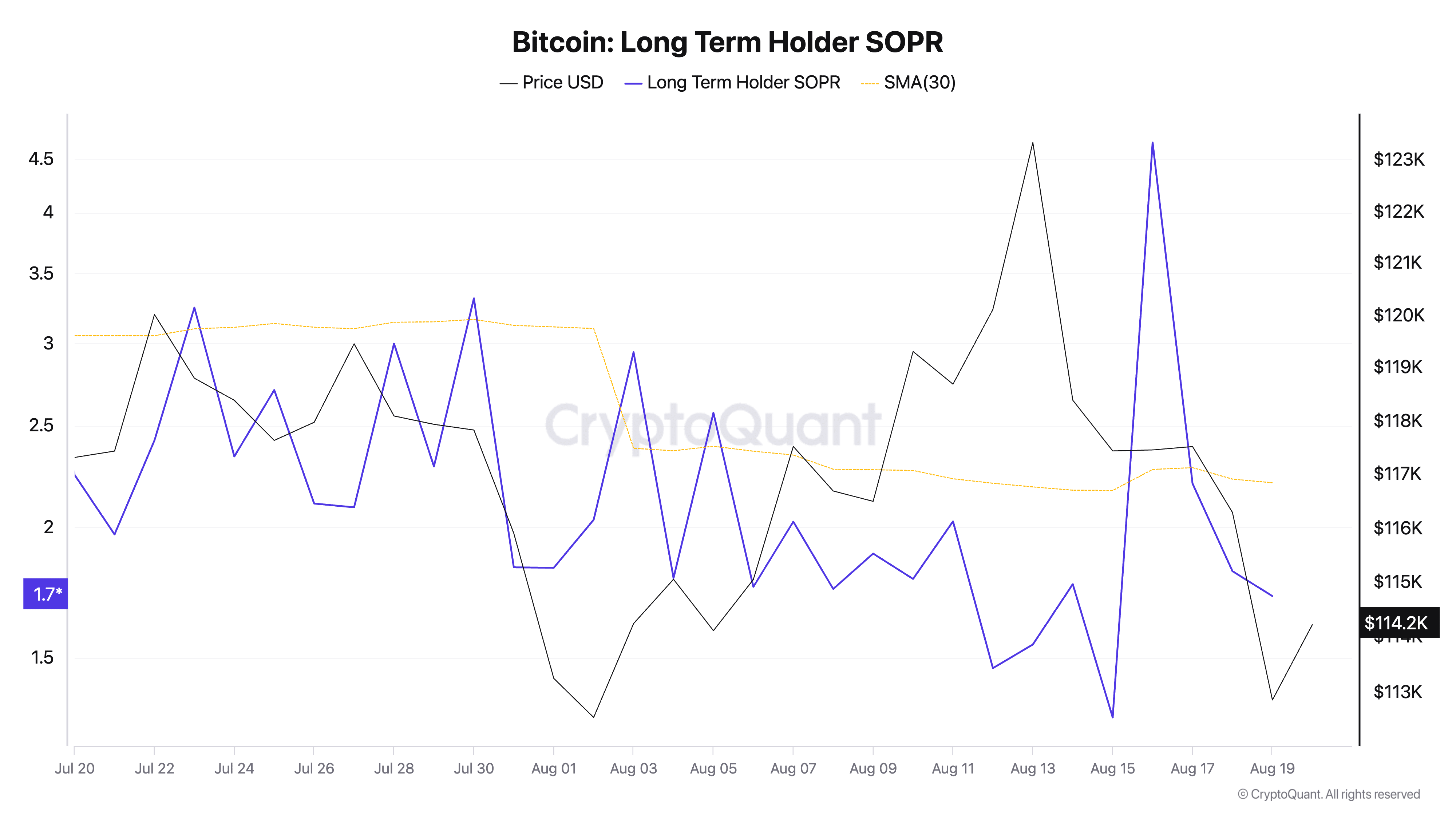
Age of supply: mainly from new coins
Data shows that 94.95% of the spending volume on August 19 came from coins under three months old. Among them:
0–1 day old: 83.27%
1–7 days old: 7.49%
1–3 months: 1.42%
3–12 months: 2.97%
Over 1 year: 2.08%
In the past 30 days, supply over one year old accounted for only 1.41% of spending volume, indicating that almost all market activity comes from short-term supply, while long-term coins remain 'inactive'.
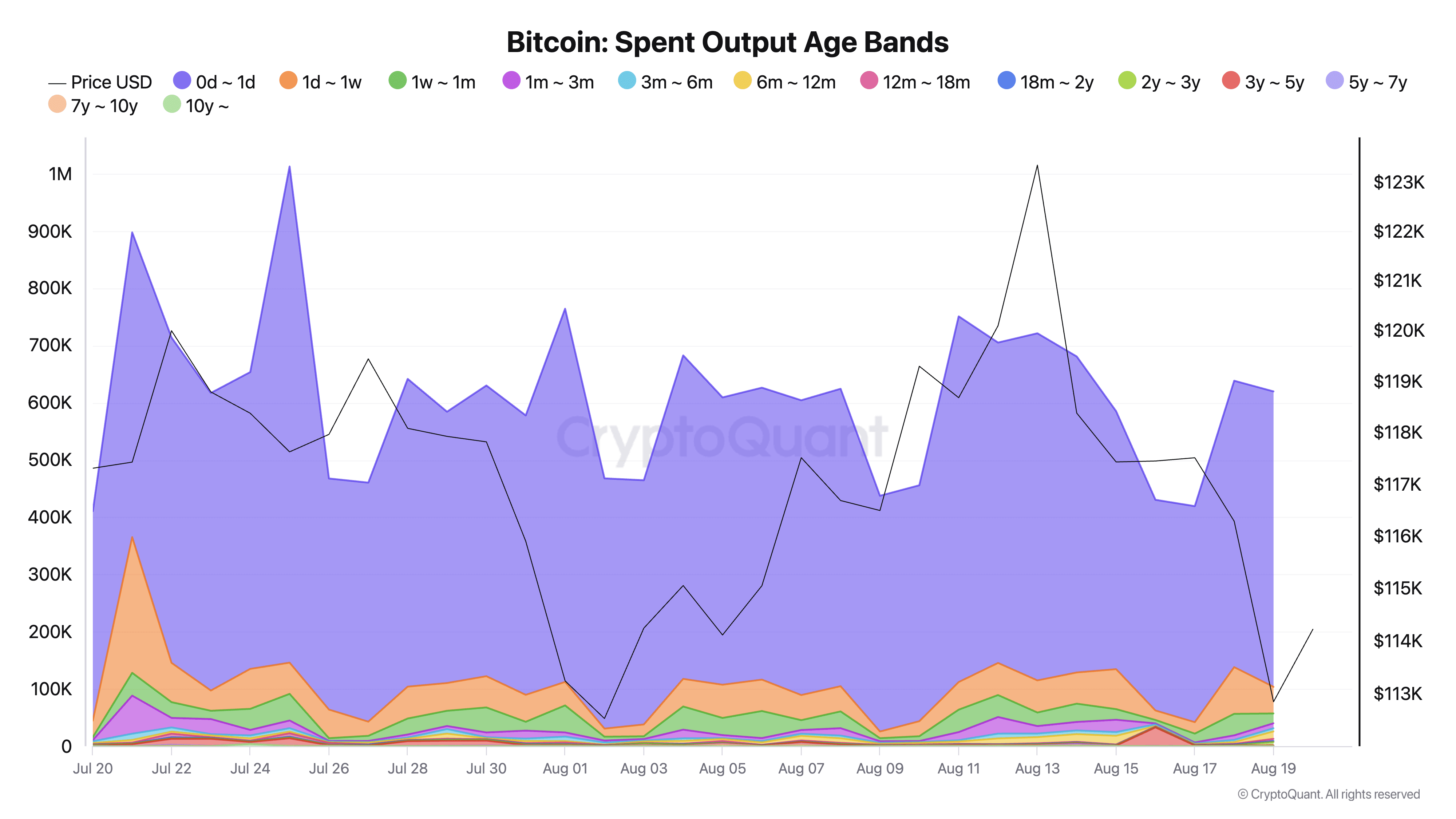
Coin Days Destroyed and NUPL
CDD: 15.6 million, right at the 30-day average, with no sudden fluctuations. This implies that long-term supply continues to 'stay put'.
NUPL: 0.537 (30-day average: 0.561), placing the market in the Belief/Denial zone, indicating that most of the supply is still in profit and profit-taking is occurring regularly.
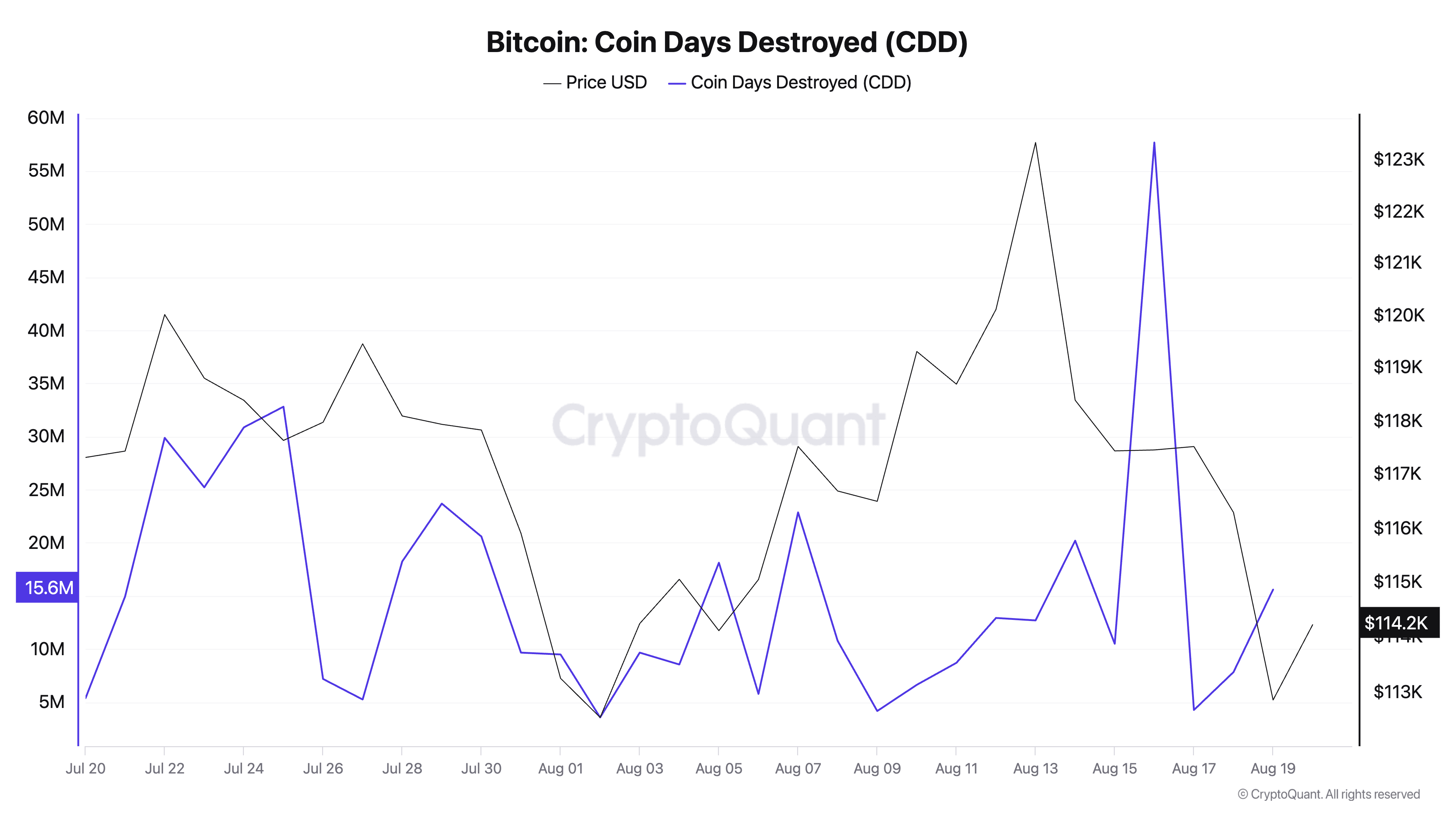
Data correlation
In the past 90 days, price volatility has the strongest correlation with the SOPR of short-term investors (+0.36), while aSOPR and LTH-SOPR are almost uncorrelated (+0.05 and +0.01). Other indicators such as NRPL, CDD, and spot volume also show weak relationships. This reinforces the view that current price momentum mainly lies in short-term investor behavior.
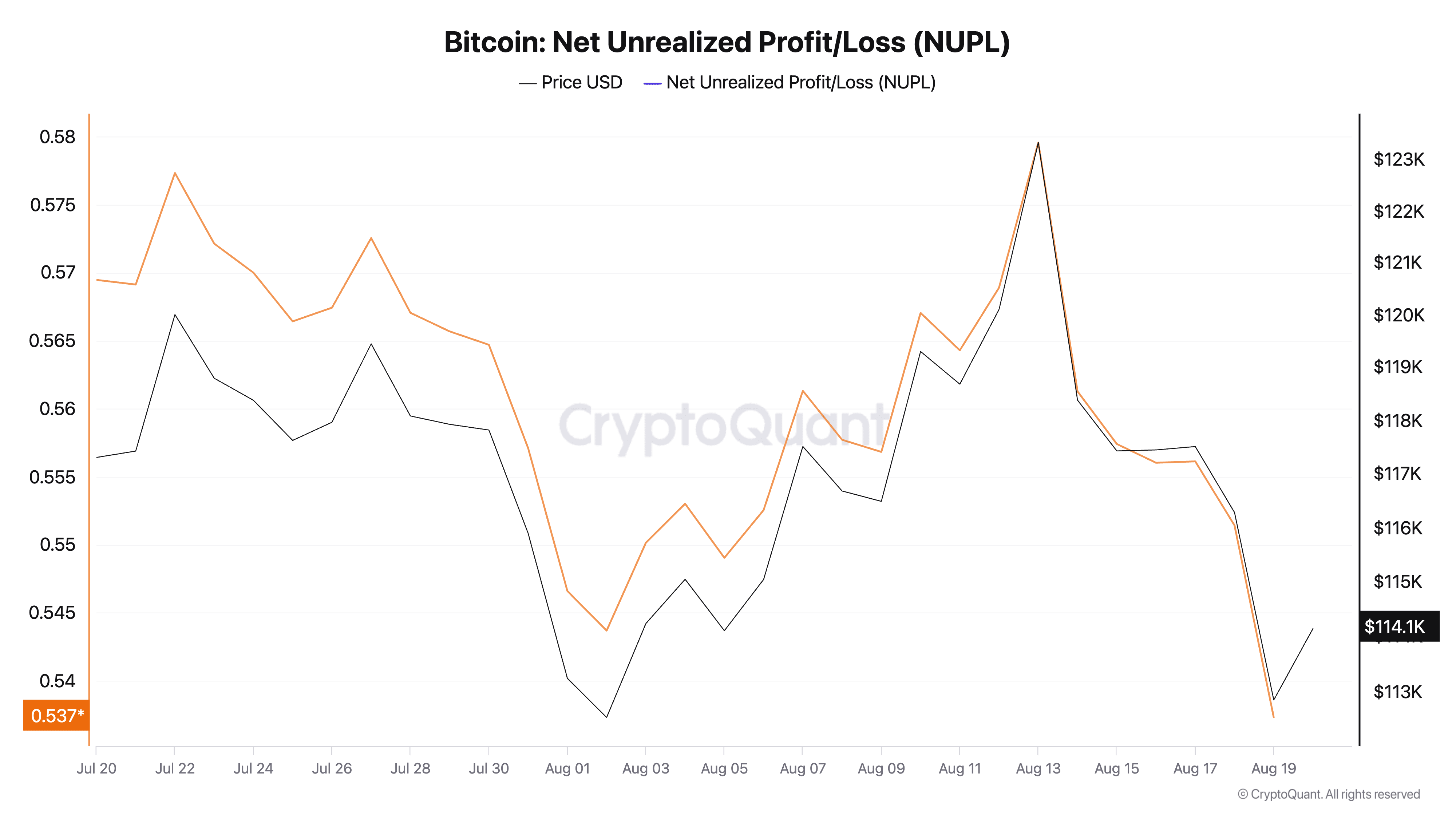
Conclusion
On-chain data shows that the market is in a state of stable distribution, with no signs of selling pressure. Although prices and trading volumes are cooling off, realized cap continues to increase in line with realized profits and miner issuance. Short-term investors maintain balance around the break-even point, while long-term investors only sell locally with high profits. Long-term supply remains silent, not creating pressure on the market.
In the coming days, the factor to watch is the SOPR of short-term investors. If this index falls below 1 for several consecutive days, it will signal that new investors are starting to cut losses, often leading to a stronger decline. However, current data still indicates stability: new supply is being absorbed well, profits are being taken regularly, and the market has not shown signs of stress.